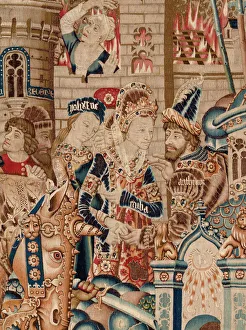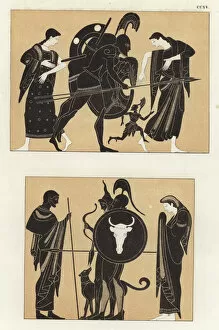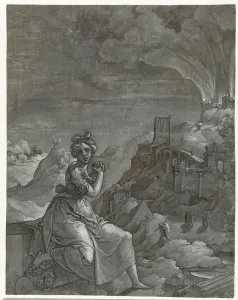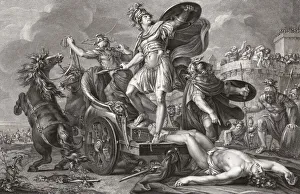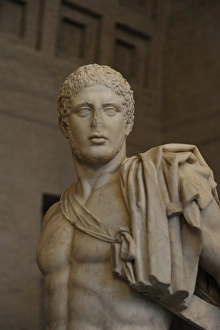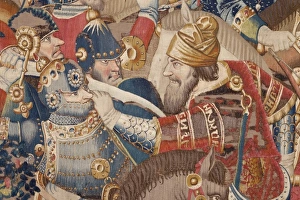Achaeans Collection
The Achaean warriors, known for their bravery and strength, played a crucial role in the Trojan War: The Destruction of Troy
All Professionally Made to Order for Quick Shipping
The Achaean warriors, known for their bravery and strength, played a crucial role in the Trojan War: The Destruction of Troy. Their warrior heads, depicted in intricate Mycenaean art, symbolize their fierce determination on the battlefield. As the war raged on, Achilles, one of the greatest heroes of all time, met his tragic end. The haunting image of his lifeless corpse serves as a reminder of the sacrifices made during this epic conflict. Amidst the chaos and destruction, Cassandra mourns the fall of Troy with her pen on paper. Her sorrow echoes through history as a testament to the devastating consequences of war. Meanwhile, an oil painting captures another harrowing moment -the shipwrecked Greek fleet on their voyage home from Troy. This artwork immortalizes both their triumphs and hardships endured throughout this legendary journey. Hector and Diomedes engage in a fierce battle captured in vivid color lithographs. These depictions showcase not only their physical prowess but also highlight the intense emotions that fueled this ancient conflict. Similarly, Troilus meets his untimely demise at Diomedes' hands; his death serving as yet another tragic chapter in this tale. A Roman sculpture pays homage to Diomedes himself -a formidable warrior whose legacy lives on through these artistic renderings dating back to 430 BC. His presence reminds us that even after centuries have passed since these events unfolded; there is still much we can learn from these ancient tales. One particularly gruesome incident stands out among them all -the vengeful act by Achilles after killing Hector in hand-to-hand combat. He drags Hector's body behind his chariot before the walls of Troy as a chilling display of power and retribution. These stories were immortalized by Homer's Iliad which continues to captivate readers today through engravings depicting its gripping narrative.

